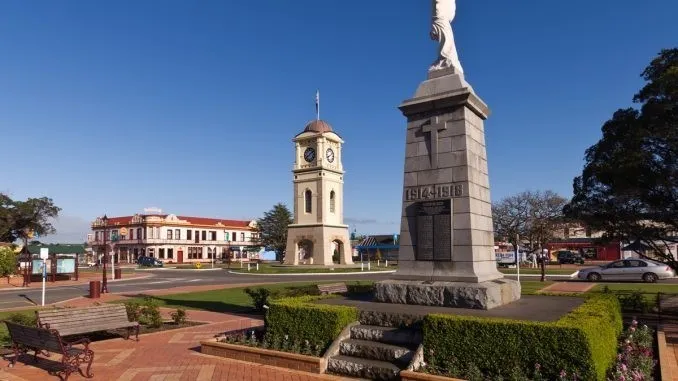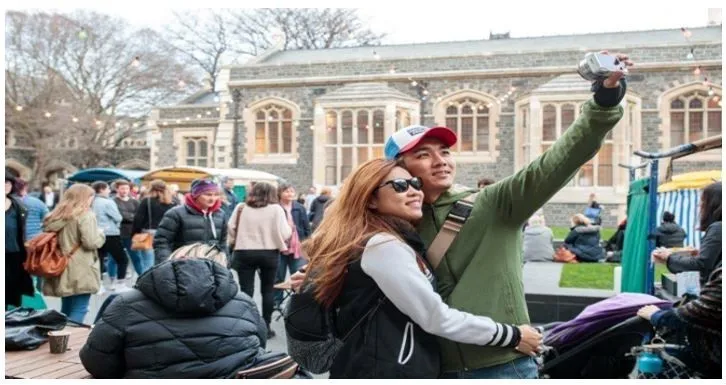NewsPerspectives
Expanding on a book already written
The largest heritage rebuild in the southern hemisphere, the Arts Centre of Christchurch comprises an iconic collection of 23 heritage buildings constructed in the distinctive Gothic Revival style established by renowned New Zealand architect, Benjamin Mountfort and Samuel Hurst Seager. The buildings occupy a 2.25ha central city block of Christchurch’s West End. Styled on old English college traditions, the buildings have been linked to some of our nation’s key developments in arts and science.
The Arts Centre buildings are tied to the establishment of the Canterbury College (now the University of Canterbury) and two of the city’s public secondary schools. Construction began with the building of the Clock Tower block – the first building in New Zealand to be designed specifically for a university. The Girls’ High School building opened the following year, followed by the Boys’ High School three years later, and other buildings were added as the university expanded. Both schools would move off-site in 1881 and 1926 respectively.
By the mid-1950s the university’s increasing roll required a move to a larger campus. By 1978, the university had fully relocated to the suburb of Ilam, where it remains today. It was then that the site’s buildings were transferred to the Arts Centre of Christchurch Trust Boardto be used for a variety of arts-related activities, including art studio spaces, cafés and restaurants, theatres, dance schools, retail, outdoor markets, galleries and public performances. The Arts Centre became known as a key destination for visitors and locals alike.
The September 2010 and February 2011 earthquakes were devastating for Christchurch and the surrounding region. The earthquakes were a huge blow for the Arts Centre, which received extensive damage throughout.
Arts Centre Rebuild
Having worked on the Arts Centre of Christchurch rebuild over the past six years, we (as a team) are creating a small chapter in the life of the Arts Centre. It was imperative for us as architects to show respect to the original designers and their philosophies. We had been given the opportunity to rediscover and restore spaces to their original intent, while retaining the existing scars of the buildings. Paring back to the original detail, quality and use of the building has been immensely satisfying.
We have been able to remove previous additions to create new, vibrant spaces that retain the character and intent of the original design. This sensitivity has been important, not only to the client and the consultants, but also to the wider public.
We are rebuilding the site to last, using a methodology and materials that bind it together with our designs. For instance, floor space is sacrificed for heritage – in the new bathrooms we have retained the original timber wall panelling but have built a fake wall over the panels to preserve them. It’s very important to us that if the bathrooms are removed, say in 20 years, the existing heritage remains, otherwise it may be lost forever.
All of the new architectural works that are open to the public are by design contemporary in nature, minimal and sharp, keeping the same design concept running through, creating a definite distinction between old and new. It’s as though the building has been designed by history. The brief for the restoration works is: ‘to implement a stronger, more robust structure, but leave no signs of it being implemented’.

Details and solutions were hatched every day on site, and interesting back stories have come from the rebuild:
- Over 12,000 pieces of original timber were surveyed, photographed, removed, stored in the correct atmospheric conditions then restored in their original locations after the internal works were complete.
- Through researching old photos, hand drawings and memories, we were able to piece together items destroyed or long lost.
- There wouldn’t be many mod-cons that the arts centre doesn’t possess, but through careful detailing and planning most are hidden away from the public’s eye.
- With the agenda of hidden new works and working within an existing earthquake damaged building, many world-first solutions were implemented. Working with consultants we were able to look at heritage-sympathetic solutions to the exposed structure.
- Working with highly skilled craftsmen (stone masons, slate and lead workers and highly skilled carpenters), we took on challenges with existing materials and existing components to be reformed.
- Before and after photography show that a sympathetic restoration has been achieved.
- From architectural, construction and structural awards to receiving the prestigious UNESCO Asia Pacific award for cultural heritage conservation, accolades and awards has offered a great sense of pride for our client and the entire project team.
Historically, people have seen the Arts Centre as the cultural heart of the city; that has always been the end goal of the restoration - to bring the people back and to bring life and activity to the site.
Heritage in Christchurch
As we approach the 8th anniversary of the second earthquakes, it is a timely reminder how far we have come. Much has been restored; the Arts Centre, Isaac Theatre Royal, The Christchurch Town Hall (almost complete), Old Government Building, Christ’s College and Café Roma, etc. So much more is still to be done: The (much talked about) Christchurch Cathedral and the Cathedral of the Blessed Sacrament, the Provincial Chambers, McLean’s Mansion and Christchurch Teachers College (Peterborough Street) to name a few.
Back in 2016, at the Canterbury Heritage Awards, I witnessed a video that had been put together of all the listed buildings that had been lost (and I don’t mind saying it was depressing viewing). Buildings such as the Cranmer Centre, the Press Building, the Old Christchurch City Council building, Guthrey Centre, St Elmo Courts, and the list goes on.
As of 2013, New Zealand Heritage has over 5,600 entries as either Category 1 or 2 buildings and sites.
Judging by these numbers it appears we need to get on with restoring them. The valuable knowledge and experience gained from working on historical sites to date can be passed and utilised in new heritage site works. This, combined with a desire to get the job done correctly points to a bright future, not only for Christchurch but also for New Zealand.
Government code change
A recent hot topic around New Zealand is what can be done to bring heritage buildings up to the new building code, and how can owners and operators afford it? The question should be - can we afford not to?
Large cities such as Dunedin and Wellington and countless rural towns such as Fielding, Waimate and Winton to name a few have many heritage buildings requiring restoration and refurbishment.

There is a lot of uncertainty in the heritage building sector. The government’s amendment to the building code came about to create safety for the public, but the bigger question is how we can sustain the cost of implementing these changes by making the buildings useful.
I see run-down, disused heritage buildings as untapped potential. With proper due diligence and a motivated client there is a chance to refurbish and regenerate, creating more and diverse uses that builds on memories (past and present).
An Exciting Future
In an article recently written by my colleague and principal Richard McGowan, he asks “in a new city, in which isolated heritage remains, what does this mean for us now and in the future?”
For me, seeing first-hand what a refurbished building at the Arts Centre does for the people of Christchurch answers that question. The Great Hall opening weekend saw 12,000+ people pass through the building. Volunteering to help over those two days, to act a guide and answer questions, I felt the excitement and shared memories that came flooding back for the many locals that came to celebrate the completed work. It was a humbling experience that helped me to understand what we are a part of - helping with the healing process of a city that lost so much and being able to hold on to what’s left.
Heritage buildings should be viewed as an opportunity, not a hinderance – they need to be looked at as worthy of the investment and the preservation of our history.

Conservation has become mainstream in architecture and for a client it can initially be a scary prospect of ‘unknown costs, hidden issues’. A process of discovery while managing risk, learning from the past, being realistic about what’s achievable, and allowing us to provide strategies to move forward can turn it into a positive experience. All these factors lead to an improvement of a heritage project and offer a viable end use and associated value.
We are immensely proud of what has currently been achieved at the Arts Centre (and all the heritage work we do at Warren and Mahoney). We still have a long way to go and the work will continue. We are giving the site a new lease of life, a much-needed rebirth. While some may be frustrated at the slow speed of the project, due diligence and care must be taken. As the largest heritage rebuild in the southern hemisphere, we look at it as giving the building a new lease on life for the next 130+ years for people to enjoy and to be inspired by.